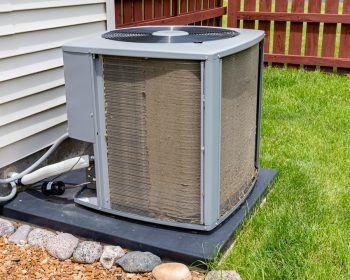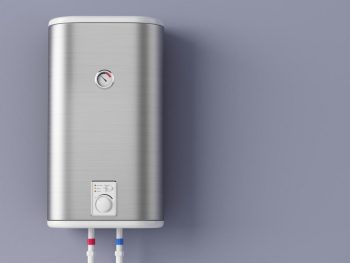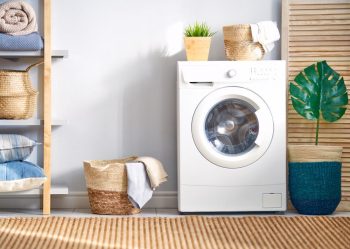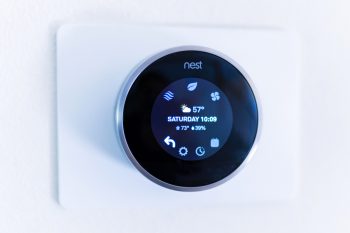
The oven is the heart of many kitchens, producing warm meals and delicious treats. However, like any appliance, it can sometimes run into problems. One common issue is a faulty oven door latch. This can be a frustrating problem, preventing you from opening or closing your oven door properly. But don’t worry – you don’t necessarily need to call a professional right away. Many oven door latch issues can be diagnosed and fixed with a little patience and the right tools. In this comprehensive guide, we’ll walk you through how to fix your oven door latch step by step.
To fix an oven door latch, first disconnect the power and remove the oven door, if necessary. Inspect the latch for damage or debris and clean it if needed. If the latch is faulty, replace it with a new one specific to your oven model. Check the door springs and replace them if they’re rusty or broken. After reassembling the oven, test the door to ensure it closes and latches properly. If the problem persists, call a professional.
Common Issues with Oven Door Latches
Before we dive into the repair process, it’s important to understand what can cause an oven door latch to malfunction. Here are some common issues:
- Oven crud inside the latch mechanism – Over time, dirt and debris can accumulate inside the latch mechanism, preventing it from engaging or disengaging correctly.
- Hinge lock issues – Some oven models have a hinge lock that holds the oven door open at a specific angle. If the hinge lock is engaged or not functioning properly, it can cause the door to not close correctly.
- Grime or rust on the hinges – Dirty or rusty hinges can prevent the door from closing properly.
- Warping of the oven – Over time, the metal of the oven can warp, causing the door to no longer line up correctly.
Safety Precautions
Before starting any repair work, it’s crucial to follow these safety precautions:
- Disconnect the power – Always unplug the oven or turn off the breaker before you start working.
- Wear protective gear – Protect your hands with gloves and your eyes with safety glasses.
- Don’t force the latch – If the latch is stuck, don’t use excessive force. This could cause further damage.
Tools and Materials
In order to fix an oven door latch, you will need the following tools and materials:
- Replacement oven door latch or catch and striker pin (specific to your oven model)
- Screwdriver (Phillips head or flathead, depending on your oven model)
- Nut driver (if required for your oven model)
- Pliers (if needed to adjust the striker pin)
- Washcloths (for a quick fix to reset oven door springs)
Step-by-Step Instructions to Fix a Broken Oven Door Latch
Now let’s get into the step-by-step process of fixing a broken oven door latch:
- Disconnect the power – Before starting any repair work, make sure to disconnect your appliance from its power source.
- Remove the door – Depending on your oven model, you may need to remove the door to access the latch. Consult your oven’s user manual for specific instructions.
- Inspect the latch – Check the latch mechanism for any visible damage or debris. Clean the latch slot in both the oven and the door if necessary.
- Replace the latch – If the latch is damaged or not functioning properly, replace it with a new one. Follow the instructions provided with the replacement latch to install it correctly.
- Check the hinges – If the door still doesn’t close properly, inspect the door springs underneath the oven door. If you find any rusty or broken springs, use pliers to remove them and replace them with new ones.
- Reassemble the oven – Once you’ve replaced the latch and checked all other components, reassemble the oven door and any other parts you removed during the repair process.
- Test the door – After reassembling the oven, test the door to make sure it closes and latches properly.
When to Call a Professional
If you’ve followed the steps above and your oven door latch is still not working properly, it may be time to call a professional. It’s better to seek professional help if the latch is broken or damaged, the door lock motor has failed, the oven display isn’t working, or the door handle is damaged.
Remember, while DIY repairs can save time and money, they can also lead to further damage if not done correctly. Always consult a professional if you’re unsure about any aspect of the repair process.
Conclusion
Fixing an oven door latch can seem like a daunting task, but with the right tools and guidance, it’s a manageable DIY project. By understanding the common issues, taking the necessary safety precautions, and following the step-by-step instructions, you’ll be well on your way to a fully functioning oven door. And remember, if you encounter any difficulties or the problem persists, don’t hesitate to call a professional. Happy cooking!
Frequently Asked Questions
Can I use any replacement latch for my oven?
No, you need to use a replacement latch that is specific to your oven model. Using the wrong latch could result in further damage or the door not functioning properly.
How can I find a replacement latch for my oven?
You can usually find replacement parts for your oven on the manufacturer’s website or at a home appliance store. Make sure to have your oven’s model number handy to ensure you get the right part.
What if I can’t remove the oven door?
Some oven models have doors that are not designed to be easily removed. If this is the case, you may be able to access the latch without removing the door. Refer to your oven’s user manual for specific instructions.
What should I clean the latch with?
If the latch needs cleaning, you can usually use a damp cloth or a soft brush to dislodge any debris. Avoid using harsh chemicals as they could damage the latch or other parts of the oven.
How do I know if the door springs are broken?
If the door springs are broken, the oven door may not close properly or may feel loose. You can usually see the springs by looking underneath the oven door. If they are rusty or visibly damaged, they likely need to be replaced.












